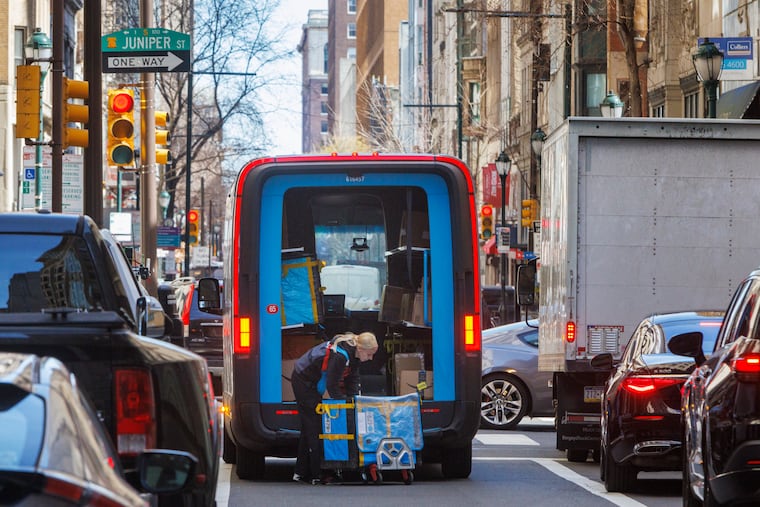PPA is rolling out ‘smart’ loading zones to keep delivery trucks moving
On April 1, the Philadelphia Parking Authority will turn on its enforcement tool, which PPA Executive Director Rich Lazer compared to E-ZPass.

These loading zones are so smart they can police themselves.
Using high-res cameras, they keep track of how long a delivery truck stays in the zone, calculate a 10-cent-per-minute user fee and transmit the bill and, if necessary, issue $51 tickets to vehicles that stay longer than the maximum one hour.
The Philadelphia Parking Authority is turning on its new enforcement tool April 1 for 23 loading zones on Chestnut, Walnut, and Sansom Streets in Center City, some of the most congested roads in the city.
“I compare it to E-ZPass,” Rich Lazer, executive director of the PPA, said in an interview. “We bill you for the usage and if you don’t pay, then you get a violation sent to you.”
The proliferation of delivery vehicles from DoorDash, Amazon, FedEx, UPS, and others cause a great deal of urban congestion as they dart to and from curbs, crowding loading zones in front of businesses and forcing some trucks to double park in the traffic lane.
It all slows transit buses, other motorists, pedestrians, and cyclists.
» READ MORE: Why is Philly stuck in traffic?
Regulating scarce curb spots in loading zones with technology that reads license plates and automatically bills or tickets vehicles should encourage vehicle turnover, Lazer said. (The cameras also can help crack down on double parkers.)
To use one of the Smart Zones, delivery vehicles will first have to be registered on the CurbPass app. When they pull in, their company is automatically charged the usage fee — no parking kiosks needed. Taken together the zones have about 192 spaces at the curb, PPA says.
Companies can register entire fleets (or fewer vehicles) at https://www.curbpass.io/philly. Owners of unregistered vehicles using the Smart Zones will be mailed $51 tickets. The technology was developed by Los Angeles-based Automotus, a pioneer in curb management that is used in cities across the country, including Pittsburgh.
“More folks are using the curb than ever before: bike lanes, parking, outdoor seating, deliveries,” Lazer said. “There’s a higher demand on the curb and it’s the same size it has been. Technology like this helps us manage it better.”